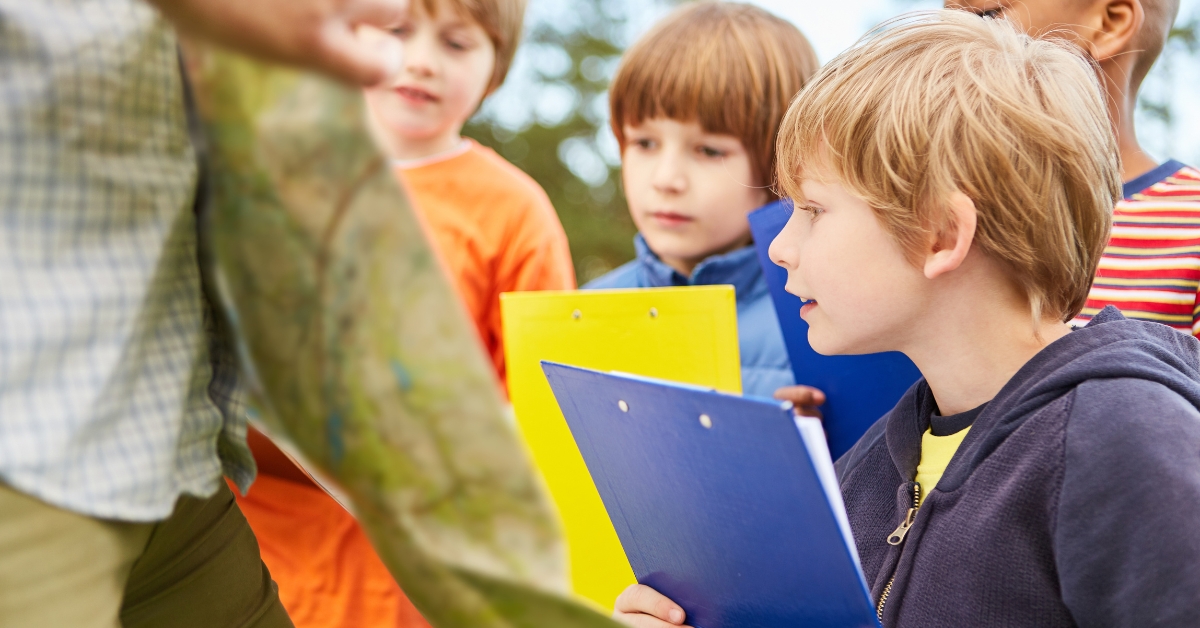Connecting with local history is more than just an educational exercise; it’s a journey into the heart and soul of your community. For homeschool parents and educators, integrating local history into your homeschool lessons offers a unique opportunity to bring the past to life and make learning more engaging for kids.
This blog post will guide you through the importance of exploring local history, provide a variety of activities to help you get started, and offer valuable resources to support your educational adventure. By the end, you’ll have a parent’s guide to history that will transform your homeschool curriculum and deepen your family’s connection to your community.
Why Local History Matters: A Homeschool Parents Guide To History
Understanding local history is crucial for anyone looking to grasp the full picture of their community’s identity. It provides context for current events, fosters a sense of belonging, and helps young learners appreciate the complexities of the world around them. For homeschool parents, incorporating local history into your homeschool lessons can make history for kids tangible and relatable. For instance, instead of reading about historical events in a distant country, children can learn about significant happenings right in their backyard, making the learning experience much more immersive.
Incorporating local history into your homeschool lessons can be as simple as discussing the origins of your town’s name or exploring the historical landmarks that dot your community. These small steps can spark curiosity and lead to more in-depth studies. By understanding local history, children can draw parallels between the past and present, thereby fostering critical thinking skills that are essential for their academic growth.
Activities For Exploring Local History
Exploring local history can be an enriching and dynamic experience for homeschoolers, bringing the past to life in ways that textbooks alone can’t achieve. One of the most immersive methods to delve into local history is by organizing walking tours of historic sites. Many communities have preserved landmarks, old buildings, and monuments that embody their historical narratives. Taking children on a walking tour allows them to physically visit these sites and hear the stories behind them. To make the experience even more engaging, consider incorporating interactive elements like scavenger hunts or quizzes. These activities can keep the kids excited and involved, encouraging them to observe details they might otherwise overlook and think critically about what they’re learning.
Another compelling activity is involving your children in community projects that focus on the history of a specific location. For instance, creating a scrapbook or a digital presentation together can be both fun and educational. This project can include gathering old photographs and newspaper clippings and conducting interviews with long-time residents or local historians. By piecing together these various elements, children not only learn about historical facts but also develop skills in research, documentation, and storytelling. This hands-on approach makes history tangible and personal, blending creativity with academic learning.
Inviting guest speakers can also add a unique and personal dimension to your homeschool history lessons. Local historians, veterans, or even family members who have deep roots in the area can share firsthand accounts and stories that bring history to life. These narratives offer insights and perspectives that are often absent from traditional educational resources. Hearing about historical events and experiences directly from those who lived through them can make the past more relatable and memorable for children. It also helps them understand the human side of history, fostering empathy and a deeper appreciation for the experiences of previous generations.
For families who prefer a more digital approach, virtual field trips to local museums or historical societies can be incredibly enriching. Many institutions now offer online tours and interactive exhibits that allow you to explore their collections and artifacts without leaving home. These virtual experiences can supplement your homeschool lessons by providing a broader context for the local history you’re studying. For example, a virtual tour of a local museum might include detailed views of historical artifacts, interactive timelines, and multimedia presentations that make history come alive. These resources can help children visualize and understand the historical significance of their own community within the wider tapestry of national and world history.
Additionally, you can make use of online archives and databases that house historical documents and records pertinent to your area. Encouraging children to explore these resources can help them learn how to conduct historical research and piece together information from various sources. This process not only teaches valuable research skills but also instills a sense of curiosity and critical thinking.
Incorporating a variety of these activities ensures that learning about local history is not just informative but also engaging and enjoyable. By combining physical exploration, creative projects, personal stories, and digital resources, you provide a well-rounded and immersive educational experience. Whether through walking tours, community projects, guest speakers, or virtual museum visits, these activities help children connect with their heritage and understand the importance of preserving and appreciating local history. By making history interactive and accessible, you foster a lifelong interest and respect for the past, which is essential for informed and engaged citizenship.
Resources For Exploring Local History
Exploring local history requires access to a diverse array of resources, both online and offline. Public libraries are among the most valuable places to start. These institutions are treasure troves of information, offering not just books but also archives and special collections specifically dedicated to local history. Many libraries house old newspapers, city directories, yearbooks, and personal papers that provide a window into the past. Beyond their collections, libraries often host workshops, lectures, and events focused on historical topics, providing opportunities to deepen your understanding and connect with other history enthusiasts who share your passion.
In addition to physical resources, online databases and websites are invaluable for exploring local history. Websites like the National Archives, local historical societies, and university libraries often have extensive digital collections accessible for free. These platforms can offer a wealth of primary sources, such as old maps, photographs, census records, and official documents. For example, the Library of Congress offers a digital archive of historical newspapers through its Chronicling America project, which can be particularly useful for understanding local events and trends from different time periods. Utilizing these online resources allows you to conduct thorough research from the comfort of your home, making it easier to uncover detailed historical information about your community.
Another excellent way to gather information about your community’s past is by conducting interviews. This method not only provides personal insights but also teaches valuable skills in communication and historical research. Start by identifying individuals who have significant knowledge or experience related to your area’s history. These might include long-time residents, local historians, business owners, or even family members with deep roots in the community. Preparing a list of questions beforehand ensures that the interview covers key topics while remaining open-ended enough to allow for natural conversation. Encourage your children to ask follow-up questions based on the responses they receive, fostering a deeper engagement with the interviewee’s stories.
Recording these interviews can preserve firsthand accounts that add rich, personal dimensions to your historical understanding. Audio recordings, video footage, or even transcribed notes can become valuable additions to your family’s historical records. These interviews often reveal personal anecdotes and details that are not available in written sources, providing a more nuanced and human perspective on historical events. They can also serve as a powerful reminder of the living history all around us, emphasizing the importance of preserving and sharing personal narratives.
Local museums and historical societies are also fantastic resources for exploring local history. These institutions often curate exhibits that highlight significant events, figures, and artifacts from the community’s past. Many offer educational programs, guided tours, and hands-on activities designed to make history accessible and engaging for learners of all ages. Visiting these places can complement the information found in books and online, providing a tangible connection to the past. For instance, seeing historical artifacts up close or walking through a preserved building can make history feel more real and immediate.
Additionally, historical reenactments and local festivals can provide immersive experiences that bring history to life. Participating in or attending these events helps children and adults alike visualize and understand the daily lives of people from different eras. These activities often involve period costumes, traditional crafts, and demonstrations of historical practices, offering a fun and memorable way to learn about history.
Incorporating a variety of resources ensures a comprehensive and engaging exploration of local history. Whether it’s through the rich collections at public libraries, the vast digital archives available online, insightful interviews with community members, or interactive experiences at local museums and festivals, each resource offers unique insights and opportunities for learning. By leveraging these diverse resources, you can create a multifaceted and immersive historical education that brings the past to life for your homeschoolers. This approach not only enriches their understanding of their community’s heritage but also fosters a lifelong interest in history and a deeper appreciation for the stories that shape our world.
A Deep Appreciation For Community
Connecting with local history is a rewarding endeavor that enriches your homeschool lessons and fosters a deeper appreciation for your community. By incorporating activities such as walking tours, community projects, guest speakers, and virtual field trips, you can make history for kids engaging and interactive. Utilizing resources like libraries, online databases, and interviews will further enhance the learning experience.
We hope this parent’s guide to history has provided you with valuable insights and practical tips to explore your community’s past. Engage with your local history, share your experiences, and watch as your homeschoolers develop a profound connection to the world around them. For more ideas and resources, consider joining local history groups or online forums where you can exchange information and learn from fellow history enthusiasts. Happy exploring!





